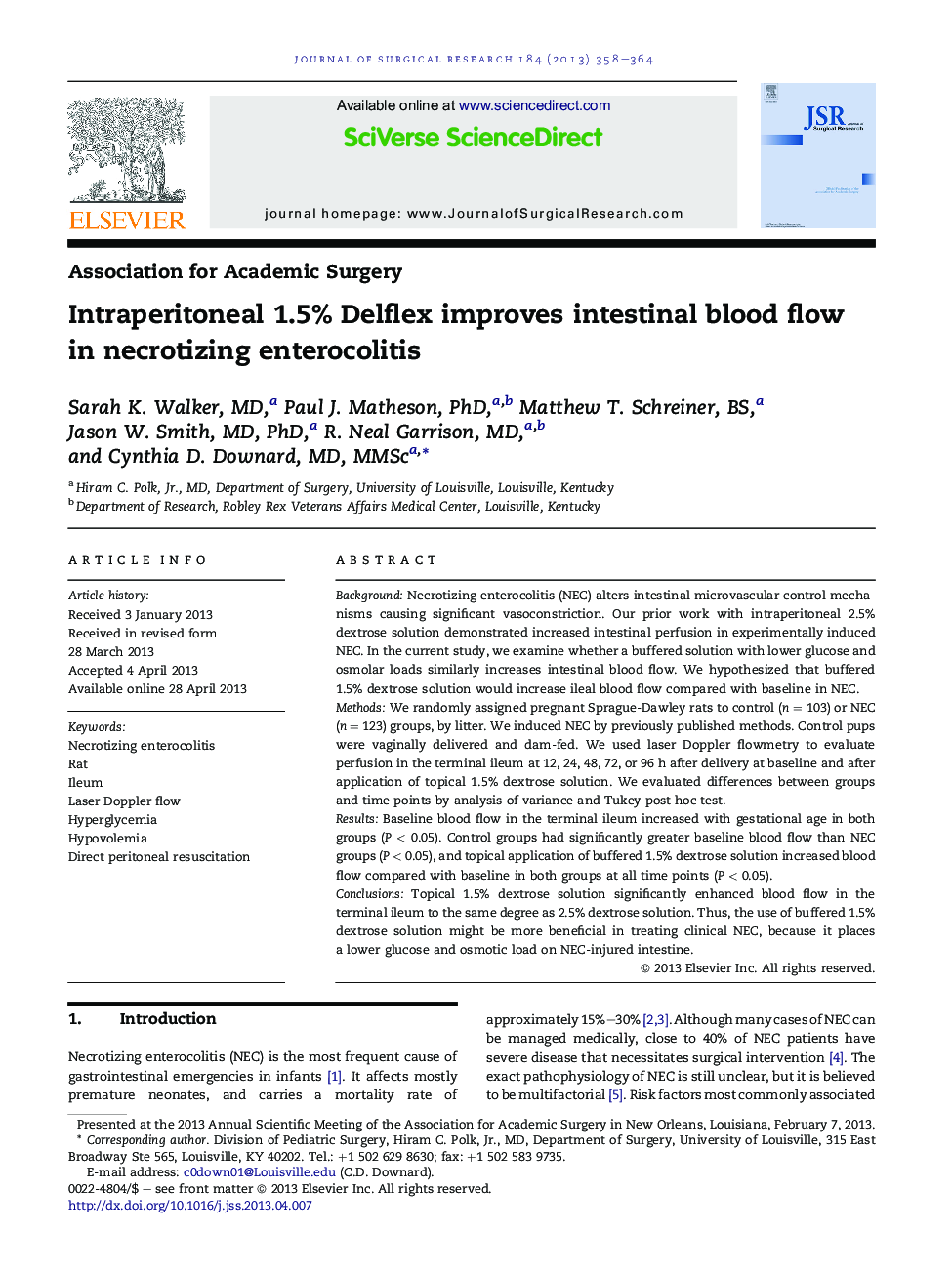| Article ID | Journal | Published Year | Pages | File Type |
|---|---|---|---|---|
| 4300618 | Journal of Surgical Research | 2013 | 7 Pages |
BackgroundNecrotizing enterocolitis (NEC) alters intestinal microvascular control mechanisms causing significant vasoconstriction. Our prior work with intraperitoneal 2.5% dextrose solution demonstrated increased intestinal perfusion in experimentally induced NEC. In the current study, we examine whether a buffered solution with lower glucose and osmolar loads similarly increases intestinal blood flow. We hypothesized that buffered 1.5% dextrose solution would increase ileal blood flow compared with baseline in NEC.MethodsWe randomly assigned pregnant Sprague-Dawley rats to control (n = 103) or NEC (n = 123) groups, by litter. We induced NEC by previously published methods. Control pups were vaginally delivered and dam-fed. We used laser Doppler flowmetry to evaluate perfusion in the terminal ileum at 12, 24, 48, 72, or 96 h after delivery at baseline and after application of topical 1.5% dextrose solution. We evaluated differences between groups and time points by analysis of variance and Tukey post hoc test.ResultsBaseline blood flow in the terminal ileum increased with gestational age in both groups (P < 0.05). Control groups had significantly greater baseline blood flow than NEC groups (P < 0.05), and topical application of buffered 1.5% dextrose solution increased blood flow compared with baseline in both groups at all time points (P < 0.05).ConclusionsTopical 1.5% dextrose solution significantly enhanced blood flow in the terminal ileum to the same degree as 2.5% dextrose solution. Thus, the use of buffered 1.5% dextrose solution might be more beneficial in treating clinical NEC, because it places a lower glucose and osmotic load on NEC-injured intestine.
